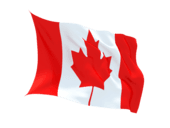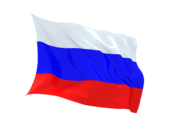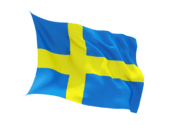
States and currencies
Regional economic union in Latin America that was founded in 1969 by Bolivia, Chile (withdrew in 1976), Colombia, Ecuador and Peru. In 1973–2011 Venezuela was a member of this organization. Latin American
development bank (CAF) serving as the development bank, investment bank and the agency of economic and financial assistance and Latin American Reserve Fund (FLAR) were established within the Union.
Countries of the union:
Bolivia Colombia Ecuador PeruEconomic union of North Africa States (Algeria, Libya, Mauritania, Morocco and Tunisia) founded in 1989. The treaty establishing the organization provided for a free-trade zone, and then a customs union.
Countries of the union:
Algeria Mauritania Tunisia Western Sahara (North-West Africa)Regional economic union of Southeast Asian countries, established in 1967. The members of the ASEAN: Indonesia, Malaysia, Singapore, Thailand, Philippines, Brunei (since 1984), Vietnam (since 1995), Laos (since 1997), Myanmar (since 1997), Cambodia (since 1999).
Countries of the union:
Brunei Indonesia Laos Malaysia Myanmar Philippines Thailand Vietnam CambodiaEconomic block of rapidly developing countries (Brazil, Russia, India, China, South Africa). The first summit of the group took place in 2009. By the end of 2012 four summits were held. Representatives of BRICS countries discussed problems of crisis management and the possibilities of a joint development bank, made decisions on the economic cooperation with the use of national currencies.
Trade and economic union of South American countries. It was founded in 1973. The main aims of the community are elimination of customs duties, import restraint, common trade policy, and convergence of financial systems. Antigua and Barbuda, Bahamas, Barbados, Belize, Dominica, Grenada, Guyana, Haiti, Jamaica, Montserrat, St. Kitts and Nevis, Saint Lucia, Saint Vincent and the Grenadines, Suriname, Trinidad and Tobago are full members of the organization.
Countries of the union:
Antigua and Barbuda Bahamas Barbados Belize Dominica Grenada Guyana Haiti Jamaica Montserrat (UK) Saint Kitts and Nevis Saint Lucia Saint Vincent and the Grenadines Surinam Trinidad and TobagoThe union consisting of the modern Gabon, Cameroon, Republic of Congo, Tchad, Central African Republic was formed as early as the colonial rule of France over these countries. In 1959 the Central African states formed the Customs Union providing for common customs tariff. From 1966 the union was reorganized in Central African Customs and Economic Union that had to agree internal taxes, investment codes and economic development programs. In 1971 the union was again reorganized in Central African Economic and Monetary Community. Several states left and united the union during this period. After gaining independence former Portugal Equatorial Guinea joined the union.
In 1945 Franc CFA (CFA – Colonies Francaises d'Afrique), also known as African Franc, was introduced for French colonies in West and Central Africa. In the late 1960-s when former colonies achieved independence CFA was interpreted as La Cooperation Financière en Afrique Centrale (Financial Cooperation in Central Africa).
Initially the banknotes were issued on the basis of convention with the French government by French private Banque de l’ Afrique Occidental, during World War II – by state Caisse Centrale de France Libre (later Caisse Centrale de France d'Outre-Mer), in 1955-1959 – by Institut d'Émission d'Afrique Francaise Équatorial et du Cameroun, in 1959-1973 – by Banque Centrale des États de l’ Afrique Équatoriale et du Cameroun, from 1973 – by Banque des États de I'Afrique Centrale.
The bank issues Franc CFA banknotes of single design for all member states. But for each country they have identification letter allowing to check emission on country basis. For Cameroon special design banknotes are issues. Banknotes issued for separate union member states are legal tender in all these states. Banque des États de I'Afrique Centrale maintains an operation account in French Treasury. Franc CFA was pegged to French Franc until 1.1.1999, later to Euro, but the monetary cooperation mechanisms in the area were not affected. It is based on the unlimited convertibility guarantee from the French Treasury and fixed parities. In exchange for this guarantee the Banque des États de I'Afrique Centrale are required to hold 65 % of its foreign exchange reserves with the French Treasury on its operation account.
Countries of the union:
Cameroon Central African Republic Chad Congo (Brazzaville) Equatorial Guinea Gabon Central African StatesAssociation of sovereign states – former dependencies, who acknowledge the British monarch the head of the state, and a number of former British colonial possessions with different forms of government.
Countries of the union:
Australia Bahamas Bangladesh Barbados Belize Botswana British Virgin Islands Brunei Canada Cayman Islands (UK) Gambia Ghana Great Britain Grenada Guyana India Jamaica Kiribati Lesotho Malaysia Malta Namibia Nauru New Caledonia (Fr.) New Zealand Nigeria Pakistan Papua New Guinea Samoa Sierra Leone Solomon Islands Swaziland Tanzania Tonga Trinidad and Tobago Uganda Vanuatu AlderneyAssociation of 12 former republics of the USSR which became the independent states after its break up in 1991. The Agreement that established the CIS was signed on Dec. 8, 1991 by the leaders of the Republic of Belarus, the Russian Federation and Ukraine in Belovezhskaya Puscha. Later on Dec. 21, 1991 the Protocol to the Agreement on establishing the CIS was signed in Alma-Ata by leaders of 11 states: Russia, Ukraine, Belarus, Kazakhstan, Kyrghystan, Moldavia, Tajikistan, Uzbekistan, Turkmenistan, Azerbaijan and Armenia. In December 1993 Georgia joined the CIS in accordance with decision of the Council of the Chiefs of States of the CIS.
Turkmenistan: August 26, 2005 on Kazan Summit of CIS countries Turkmenistan declared itself an associated member of organization.
Ukraine: Ukraine is the state-founder and state-participant of CIS though it had not ratified CIS Charter and isn’t CIS member de-jure.
Georgia: December 3, 1993 Georgia ratified the Protocol to the Agreement and April 19, 1994 – the CIS Charter. August 12, 2008 Georgia expressed a wish to leave the CIS. August 14, 2008 the Parliament of Georgia unanimously adopted this decision. August 18, 2009 Georgia officially left the CIS.
Mongolia takes part in some CIS structures as an observer.
In 2008 Afghanistan expressed a wish to join the CIS and now is an observer on the inter-Parliamentary Assembly.
Countries of the union:
Armenia Azerbaijan Belarus Kazakhstan Kyrgyzstan Moldova Russia Tajikistan Turkmenistan Ukraine UzbekistanRegional international organization founded in 1981. The union includes Bahrain, Qatar, Kuwait, UAE, Oman, and Saudi Arabia. The countries signed the Unified Economic Agreement due to which tariff barriers were abolished. Four states of the organization plan to introduce a common currency – Khaleeji (Arabic for "of the Gulf").
Countries of the union:
Bahrain Kuwait Oman Qatar Saudi Arabia United Arab EmiratesAn international economic organization established in 2000 in order to create a common customs tariff, free movement of capital and the formation of a single financial market. The unit’s members are Belarus, Kazakhstan, Kyrgyzstan, Russia and Tajikistan. In 2010 the Customs Union of Belarus, Kazakhstan, and Russia came into existence.
Association of European states established in accordance with Treaty on European Union (Maastrikht) (signed 7.02.1992, entered into force 1.11.1993). As on 1.07.2013 the following 28 countries are EC member states: Austria, Belgium, Bulgaria, Croatia, Cyprus, Czech Republic, Denmark, Estonia, Finland, France, Germany, Greece, Hungary, Ireland, Italy, Latvia, Lithuania, Luxembourg, Malta, Poland, Portugal, Romania, Slovakia, Slovenia, Spain, Sweden, The Netherlands, United Kingdom.
In 1950 the French Foreign Minister Robert Schuman proposed an eventual economic and political union of all Europe, the first step of which would be the integration of the coal and steel industries. Next year the European Coal and Steel Community (ECSC) was set up when six states – Belgium, France, West Germany, Italy, Luxembourg, and the Netherlands, signed the Treaty of Paris. The successful experience resulted in signing in 1957 the Treaties of Rome created the European Economic Community (EEC) and the European Atomic Energy Community (Euratom) and six members undertook to eliminate trade barriers among themselves by forming a common market. In 1967 the institutions of all three communities were formally merged into the European Community (EC) creating a single Commission, a single Council of Ministers, and the European Parliament. Members of the European Parliament were initially selected by national parliaments, since 1979 each five years direct elections are held. In 1973 the first enlargement of the EC took place with addition of Denmark, Ireland and the United Kingdom. In 1981 Greece joined the union, in 1986 – Portugal and Spain. The 1992 the Treaty of Maastrikht laid the basis for further forms of cooperation in foreign and defense policy, in judicial and internal affairs, and in the creation of an economic and monetary union – including a common currency. As a result of this step the European Union (EU) was created consisting of 12 states. In 1995 Austria, Finland and Sweden joined the EU raising the membership total to 15.
According to Maastrikht Treaty, on 01.01.1999 European Economic and Monetary Union (EMU) entered into force. Since that moment for eleven EC member states, signed the Council Regulations (EC), May 3, 1998, introducing the Euro, Euro became the settlement unit for Austria, Belgium, Finland, France, Germany, Ireland, Italy, Luxembourg, Portugal, Spain, The Netherlands. Greece joined the Euro area on 01.01.2001. In these 12 states Euro was put into circulation in January–February 2002. Slovenia introduced euro on 01.01.2007, Cyprus and Malta – on 01.01.2008, Slovakia – on 01.01.2009, Estonia – on 01.01.2011. The rest member states of the union (Denmark, Sweden and United Kingdom) kept their national currencies. The states entered the EC in 2004 – the Czech republic, Hungary, Latvia, Lithuania, Poland, and in 2007 Bulgaria and Romania – are at various stages of introducing Euro.
EMU members are entitled, but not obliged, to introduce Euro instead of their national currencies. On the one hand, they may postpone the introduction for an unlimited period if they believe their economy is not ready. On the other – introduction of Euro is subject to meeting curtain economic criteria, including two years of exchange rate stability after joining. There are four other criteria. These relates to interest rates, the budget deficit (not more than 3 %), the inflation rate and the debt-to-GDP ratio (not more than 60 %).
Established in 1965 and consists of Argentina, Bolivia, Brazil, Chile, Columbia, Dominican Republic, Equador, Mexico, Paraguay, Peru, Uruguay, Venezuela. Primary aim of the organization is coordination in the field of finance policy and mutual settlements.
Countries of the union:
Argentina Bolivia Brazil Chile Colombia Dominican Republic Ecuador Mexico Paraguay Peru Uruguay VenezuelaIntergovernmental organization founded in 1945. To date the league consists of 22 countries including 18 Arab states, Somali, Djibouti, Comoros, and Palestinian National Authority. The main economic achievement of the union was a creation of the free trade area.
Countries of the union:
Algeria Angola Bahrain Comoros Djibouti Egypt Iraq Kuwait Mauritania Oman Palestine Qatar Saudi Arabia Somalia Sudan Tunisia United Arab Emirates Western Sahara (North-West Africa) YemenThe largest integrative union of Latin America and the Caribbean founded in 1991 and aimed at creation of a single market of South American countries. Currently, the economic agreement is signed by Argentina, Brazil, Uruguay, Paraguay (its membership is suspended until April, 2013) and Venezuela. Bolivia, Chile, Colombia, Ecuador, and Peru currently have associate member status.
Countries of the union:
Argentina Bolivia Brazil Chile Colombia Ecuador Peru Uruguay VenezuelaRegional economic union of Eastern Caribbean states established in 1981. The members of the OECS: Anguilla, Antigua and Barbuda, British Virgin Islands, Dominica, Grenada, Montserrat, St.Lucia, St. Kitts, St. Vincent and the Grenadines.
Countries of the union:
Anguilla (UK) Antigua and Barbuda Dominica Montserrat (UK) Saint Kitts and Nevis Saint Lucia Saint Vincent and the Grenadines Eastern Caribbean StatesEstablished in 1960 by Iraq, Iran, Kuwait, Saudi Arabia and Venezuela to coordinate the petroleum policies of its members and to provide the member states with technical and economic aid. Later Algeria, Ecuador (left organization in 1992), Gabon (left the organization in 1996), Indonesia, Libya, Nigeria, Qatar and UAE joined the OPEC.
Countries of the union:
Algeria Ecuador Indonesia Iran Iraq Kuwait Libya Qatar Saudi Arabia United Arab Emirates VenezuelaThe union consisting of the modern Benin, Côte d'lvoir, Mali, Niger, Senegal and Togo was formed as early as the colonial rule of France over these countries. In 1962 these states formed West African Customs and Economic Union providing for common customs tariff. From 1974 – West African Economic Community. In 1962 Mali left the union, in 1983 reentered it, until 1973 Mauritania was the member. After gaining independence former Portugal Guinea-Bissau joined the union. In 1945 Franc CFA (CFA – Colonies Françaises d'Afrique), also known as African Franc, was introduced for French colonies in West and Central Africa. In the late 1960-s when former colonies achieved independence CFA was interpreted as La Communauté Financière Africaine (African Financial Community). Initially the banknotes were issued on the basis of convention with the French government by French private Banque de I'Afrique Occidentale (until 1955), in 1955-1959 – by Institut d'Émission d'Afrique Francaise Occidentale et du Togo, from 1959 – by Banque Centrale des États de I'Afrique de I'Ouest. The bank issues Franc CFA banknotes of single design for all member states. But for each country they have identification letter allowing to check emission on country basis. Banknotes issued for separate union member states are legal ten-der in all these states. Banque Centrale des États de I'Afrique de I'Ouest maintains an operation account in French Treasury. Franc CFA was pegged to French Franc until 01.01.1999, later to Euro, but the monetary cooperation mechanisms in the area were not affected. It is based on the unlimited convertibility guarantee from the French Treasury and fixed parities. In exchange for this guarantee the Banque Centrale des États de 'Afrique de l'Ouest are required to hold 65 % of its foreign exchange reserves with the French Treasury on its operation account.




